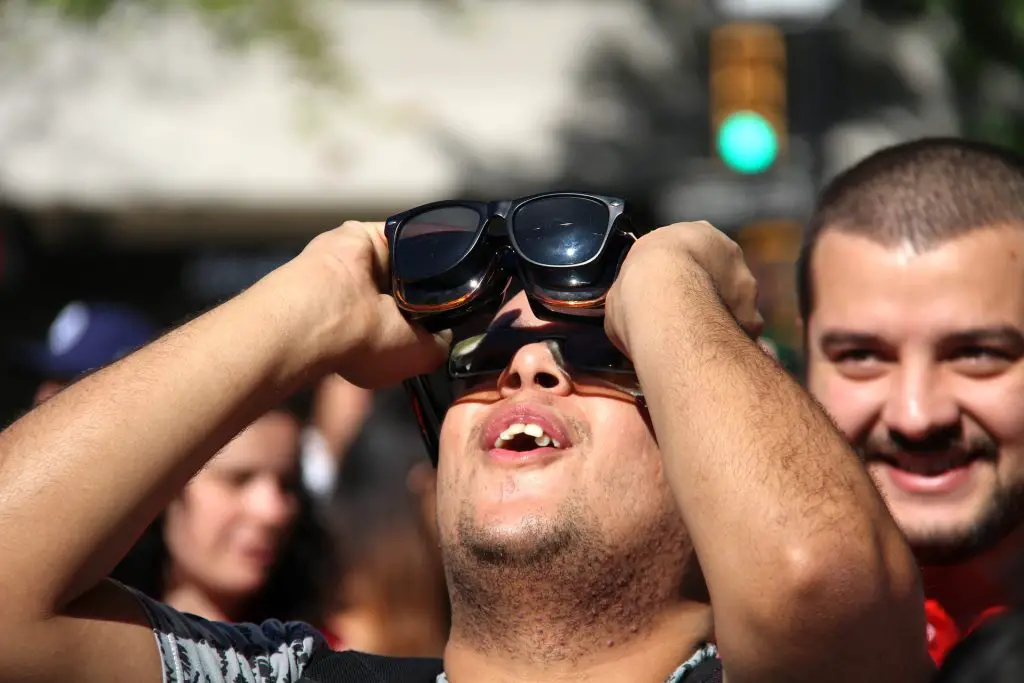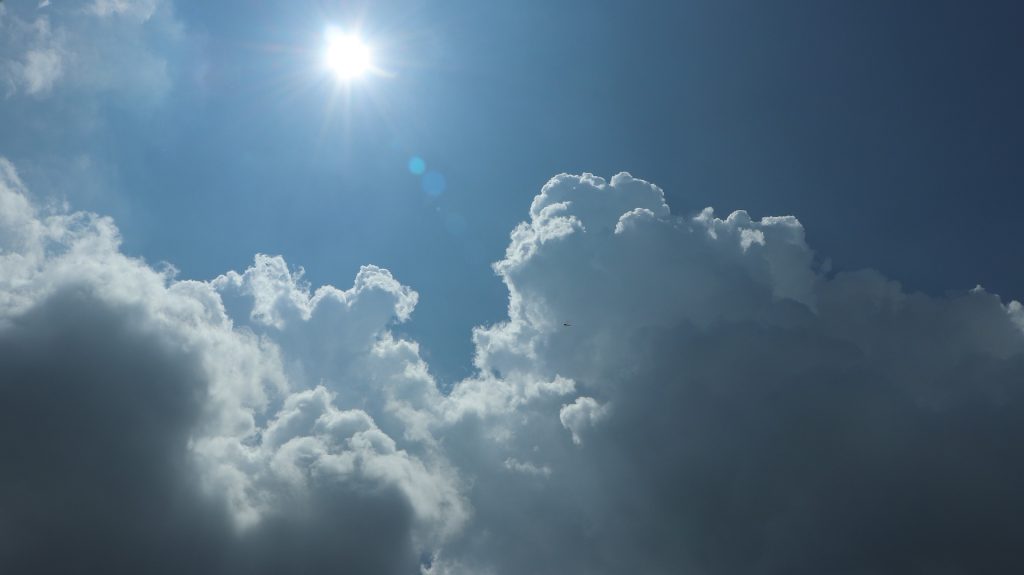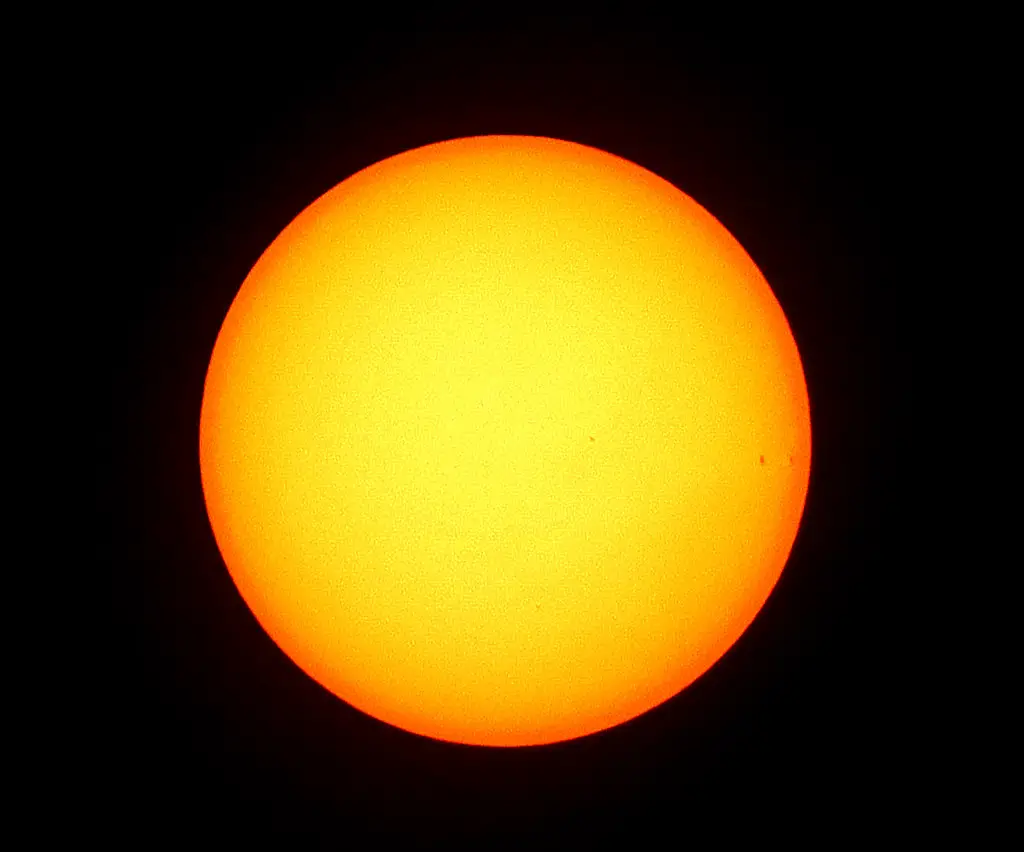What Happens If You Look At The Sun With Binoculars?
Have you ever wondered what it would be like to look at the sun with binoculars? It might seem like a harmless and exciting activity, but have you considered the potential risks?

In this article, we’ll explore the dangers associated with looking at the sun with binoculars. We’ll discuss the increased risk of damage to your eyes, how binoculars intensify the sun’s rays, and the potential long-term effects on your eyesight.
But that’s not all. We’ll also delve into the precautions you can take to protect your eyesight, including the use of solar filters, the importance of proper eye protection, and following safety guidelines.
Looking At Sun Through Binoculars
Looking at the sun can be a thrilling experience, especially during a solar eclipse or when witnessing a rare celestial event.
However, it can also be a hazardous activity if you’re not careful. When using binoculars to view the sun, the risk of damage to the eyes is greatly increased.
Directly looking at the sun can cause immediate and irreversible damage to the eyes.
The sun emits harmful ultraviolet and infrared rays that can burn the retina, leading to permanent blindness.
When using binoculars, the risk of damage to the eyes is even greater because they concentrate the sun’s light, making it more intense and harmful.
How Binoculars Intensify the Sun’s Rays
Binoculars use lenses to magnify images, which means that the sun’s rays are focused on a smaller area of the retina, resulting in an increased risk of damage.
This concentration of light can cause a thermal effect that leads to the destruction of the retina’s cells, causing permanent damage to the eyes.
Additionally, the longer you look at the sun through binoculars, the greater the risk of harm.

Potential Long-term effects on Eyesight
The effects of looking at the sun with binoculars can be severe and long-lasting. It can cause temporary or permanent vision loss, depending on the degree of damage.
In some cases, the damage may be so severe that the eyesight cannot be restored.
Even if the damage is not immediately apparent, it may still cause problems later in life, such as cataracts or macular degeneration.
It’s essential to note that the damage caused by looking at the sun with binoculars can occur within seconds, and it may not be immediately apparent. It’s crucial to take precautions to avoid any harm to your eyesight.
To protect your eyes when using binoculars to view the sun, it’s essential to use proper solar filters. These filters can reduce the sun’s intensity while still allowing you to view it safely. It’s also important to follow the safety guidelines provided by the manufacturer of the binoculars.
What are the Immediate signs that you have damaged your eyes from looking at the sun through Binoculars?
If you have looked at the sun through binoculars, you may experience a range of symptoms that indicate damage to your eyes.
The severity of the damage depends on the length of time you looked at the sun, the intensity of the sun’s rays, and the level of protection you had for your eyes.
Some common signs of damage to the eyes from looking at the sun through binoculars include:
- Blurry vision: If your vision is blurred, hazy, or distorted, it may be a sign of damage to your eyes.
- Sensitivity to light: If your eyes are overly sensitive to light, it may be a sign of damage to your retina.
- Eye pain: If you experience any pain or discomfort in your eyes, it may be a sign of damage.
- Seeing spots or flashing lights: If you see spots or flashing lights, it may be a sign of damage to your retina.
- Loss of vision: In severe cases, looking at the sun through binoculars can cause permanent damage to your eyes and lead to partial or complete loss of vision.
If you experience any of these symptoms after looking at the sun through binoculars, it’s important to seek immediate medical attention.
Remember, your eyesight is precious and worth protecting, so always take the necessary precautions when viewing the sun.
Importance of using proper eye protection
Using proper eye protection is essential when looking at the sun. The only safe way to view the sun is through specialized solar filters that block out harmful UV and infrared rays.
Regular sunglasses, even those with dark lenses, are not enough to protect your eyes from the sun’s harmful rays.
When using binoculars to view the sun, it’s essential to use solar filters specifically designed for the binoculars. These filters reduce the intensity of the sun’s rays, making it safer to look at the sun.
Precautions to take
When it comes to using binoculars to view the sun, taking proper precautions is crucial to avoid any harm to your eyesight.
Here are some precautions you can take to protect your eyes:
One of the most important things to remember when using binoculars to view the sun is to never look directly at it.
This can cause serious and irreversible damage to your eyes. Instead, use the binoculars to project an image of the sun onto a piece of paper or cardboard(we will show you step by step!), and then view the image without the binoculars.
This method is known as the projection method, and it’s a safe way to view the sun with binoculars.
Another way to protect your eyes when using binoculars is to keep the binoculars stable using a tripod or some other means.
This will reduce the chances of accidentally moving the binoculars and looking directly at the sun.

Image Credit: Flickr
Solar filters
Solar filters are another way to protect your eyes when using binoculars to view the sun.
These filters are specially designed to block out harmful UV and infrared rays, making it safe to view the sun through binoculars.
It’s important to use solar filters that are specifically designed for the binoculars you are using.
Using filters that are not specifically designed for your binoculars can result in serious damage to your eyesight.
Solar Eclipses Through Binoculars
Projection is an inexpensive and relatively safe method for viewing a solar eclipse.
it’s important to note that the direct heat from the sun can potentially damage the eyepieces of binoculars and telescopes.
The damage is faster in the ones with multiple lenses and prisms that are glued together using a specific kind of adhesive.
The heat can melt the adhesive and harm the lenses, causing permanent damage.
Therefore, astronomers and enthusiasts who enjoy observing the sun recommend using simple lenses like the Huygens and Ramsden eyepieces when projecting a solar eclipse using binoculars or telescopes.
Caution: It’s important to limit the use of your projector to a few minutes at a time.
This is because the sun’s rays can heat up the binoculars and create a potentially flammable hot spot on the paper.
Additionally, it’s crucial never to leave your projector unattended to avoid any accidents or mishaps.
How To Make a DIY Projector with Binoculars?
Making a DIY projector with binoculars is an easy and fun way to safely observe a solar eclipse or project an image of the sun onto a screen or wall.
Here are the step-by-step instructions and the materials you’ll need:
Materials:
- A pair of binoculars
- A tripod or a stable surface to place the binoculars on
- A piece of white cardboard or paper
- Scissors
- Tape
Step 1: Set up the binoculars Find a stable surface or use a tripod to set up your binoculars. Make sure they’re stable and won’t move or shake during the projection.
Step 2: Prepare the screen Cut a piece of white cardboard or paper to use as your screen. It should be large enough to catch the projected image.
Step 3: Position the screen Place the cardboard or paper screen a few feet away from the binoculars, making sure it’s flat and level.
Step 4: Adjust the binoculars Adjust the focus on the binoculars to make sure the image of the sun is clear and sharp.
Step 5: Project the image Hold the binoculars steady and aim them towards the sun. You should see the image of the sun through the binoculars. Move the binoculars around until the sun’s image is projected onto the cardboard or paper screen.
Step 6: Secure the projection Once you have the sun’s image projected onto the screen, use tape to secure the binoculars in place. Make sure they don’t move or shift during the projection.
And that’s it! You now have a DIY projector with binoculars to safely observe the sun or a solar eclipse. Remember to never look directly at the sun or leave the projector unattended. Enjoy your safe and fun sun-watching experience!
Importance of Following Safety Guidelines
To ensure your safety when using binoculars to view the sun, it’s important to follow safety guidelines.
These guidelines include never looking directly at the sun, using proper eye protection, and using binoculars only for short periods.
It’s also important to follow the instructions provided with the solar filters and binoculars to ensure proper use.
Additionally, it’s crucial to avoid looking at the sun during partial solar eclipses, as these events can cause significant damage to your eyesight.
During a solar eclipse, the sun’s harmful rays can still cause damage even when the sun is partially obscured.
Conclusion
Looking at the sun with binoculars can be incredibly dangerous and can cause serious harm to your eyesight.
The risks associated with this activity include increased risk of damage to the eyes, the potential long-term effects on eyesight, and the dangers of looking directly at the sun.
It’s important to understand these risks and take proper precautions to protect your eyesight.
The use of solar filters and proper eye protection is essential when using binoculars to view the sun. It’s also important to remember to never look directly at the sun, as this can cause serious and irreversible damage to your eyesight.
Can You See ISS Through Binoculars
Best Binoculars With In Your Budget.
Check:
Top picks for binoculars under $200
Best Binoculars Under $300 & 400
